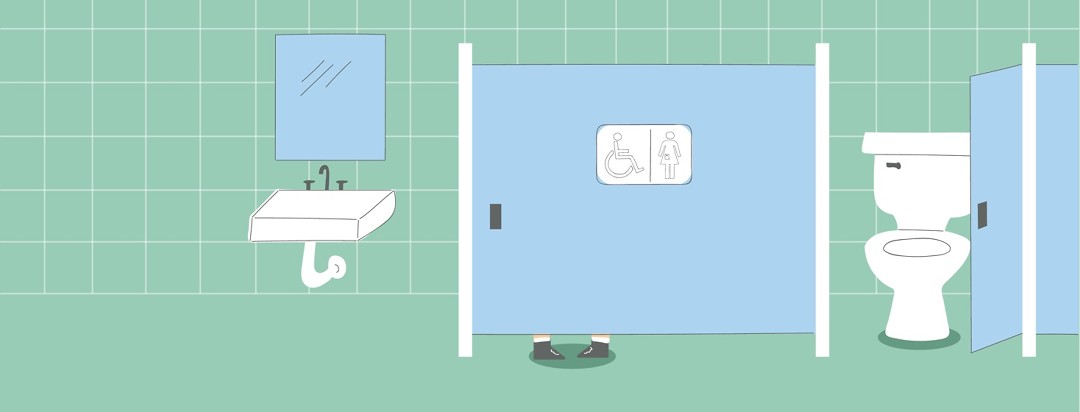Public Restrooms: The Dilemma of Using "Disabled" Toilets
Prior to having my bladder removed, I never gave "disabled" toilets a second thought. In fact, I would walk past them and assume that they were for use only by people in wheelchairs, given that the “disabled” signage on the door tends to usually show a figure of a person sitting in a wheelchair.
I recently read an article asking its readers what a 'perfect' disabled toilet would contain for a person with an ostomy. Some really good ideas were shared.
Being made to feel guilty
However, I don’t know about you but I’ve often been made to feel quite guilty by using these conveniences. The sideways glances and murmurings of others used to make me feel quite uneasy.
I was recently sitting in an airport lounge awaiting a long haul flight. In the lounge, there was a “disabled” toilet. I’m always just a little anxious that my ostomy bag is in good order for the flight, and I like to give it a good check over before boarding.
I wanted to check to make sure my bag was secure
So, it was about an hour before my flight was due to depart, and I needed the bathroom. This would be a good opportunity to take a closer look at “my bag” to check that I felt comfortable and secure. I also at this point add some elastic barrier strips. These are designed to prevent the edges of your barrier from lifting and keep your barrier securely in place. They are elastic, so they're able to move with you as you bend and stretch. This can provide greater security and peace of mind that your bag will stay in place. (Basically, they are like a large half-moon shape, see-through plaster that you “stick” over the edges of your base plate to give greater security and can aid in your “bag” lasting for longer.)
Deciding to use the disabled toilet for space and privacy
So, I went to the disabled toilet to check that everything was okay and to add the elastic barrier strips. I chose to use the disabled toilet as it gives me more room and also gives me more privacy.
As I approached the disabled toilet, I could see a couple of members of staff give me a kind of dirty look as I entered, but I thought no more about it. I entered and went in my bag to get my elastic strips out. Darn, I had put them in my hand luggage case. So, I pulled my clothes up so I could give my bag a thorough check and would have to return to add the elastic barrier strips.
Standing waiting outside the restroom
I returned a little later to the disabled toilet to add the barrier strips. I was standing outside waiting for a good while when a member of the lounge staff came and asked what I was doing. She informed me that the toilets that I should use were outside of the lounge down the corridor and that the disabled toilet had been locked!
You see, the staff had looked at me and decided just by looks that I didn’t need to use the disabled toilets and was, in fact, abusing them! I was furious. Firstly, who are they to judge? Secondly, why hadn’t they put a note on the door?
Not all disabilities are visible
I insisted on seeing the lounge manager to make a complaint, but also, I wanted them to be aware that not all disabilities are visible.
Lots of apologies were given, which I accepted. But before leaving, I gave them a little talk about “ostomies” and why we would need to use a disabled toilet. Hopefully, by educating the staff, the next ostomate may not be questioned - or worse, have the disabled toilets locked on them!
Have you encountered any issues when using a disabled toilet?

Join the conversation